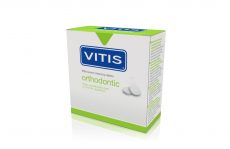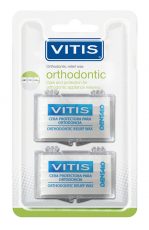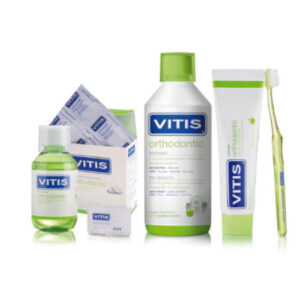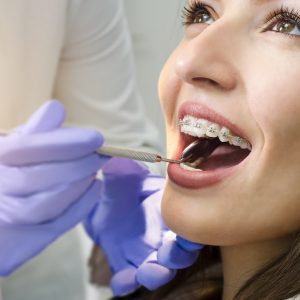Common indications during orthodontic treatment
A study of oral hygiene in orthodontics patients found the following prevalence of complications, mostly associated with inadequate removal of dental biofilm and food debris 1:

- Gum inflammation – inflammation of the gingiva caused by pro-inflammatory toxins, a by-product of bacterial metabolism of carbohydrates.
- Tooth decay – acid producing bacteria within dental biofilm break down the tooth’s hard tissue by a process of progressive localised demineralisation.
- Bad breath – bacterial metabolism of food debris results in the release of Volatile Sulphur Compounds (VSC), the source of mal-odour associated with oral halitosis.
- Ulcers – common particularly at the beginning of treatment, ulcers are caused by the rubbing of orthodontic appliances against soft tissues.
Clinically Proven
Formulated specifically for brace wearers VITIS orthodontic is clinically proven to be highly effective in helping patients maintain good oral care during the course of their treatment. VITIS orthodontic guarantees success of orthodontic treatment:
- Reduces oral biofilm build-up 2
- Reduces gingival inflammation 2
- Reduces discomforts that occur during treatment 1
- No side effects on braces or mucosa 3
Clinically proven from a 257 patient trial.
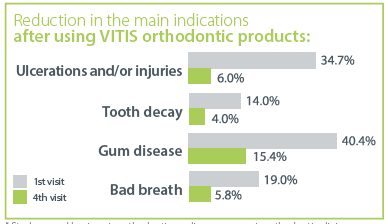
References
- Dentaid (2009) Study on the oral hygiene of orthodontic patients in dental clinics. Laboratorios Dentaid. Barcelona.
- Herrera D, Pérez L, Escudero N, Alonso B, Serrano J, Martin C, Sanz M. (2009) Evaluation of cetylpyridinium chloride formulations in orthodontic patients: periodontal outcomes. Journal of Dental Research and an oral presentation at IADR Munich; Abstract & oral communication know Las Palmas. Complutense University of Madrid, Spain.
- Alonso B, Martin C, Perez T, Otheo M, Cañete E, Herrera D, and Palma JC, (2009) Dental School. Complutense University, Madrid. ETEP. Research Group, Madrid, Spain. Evaluation of Cetyl-Pyridinium Chloride Formulations In Orthodontic Patients: Orthodontic-related Outcomes. Joint Meeting of the Continental European, Israeli and Scandinavian Divisions of the IADR (Munich September 10-12, 2009).






